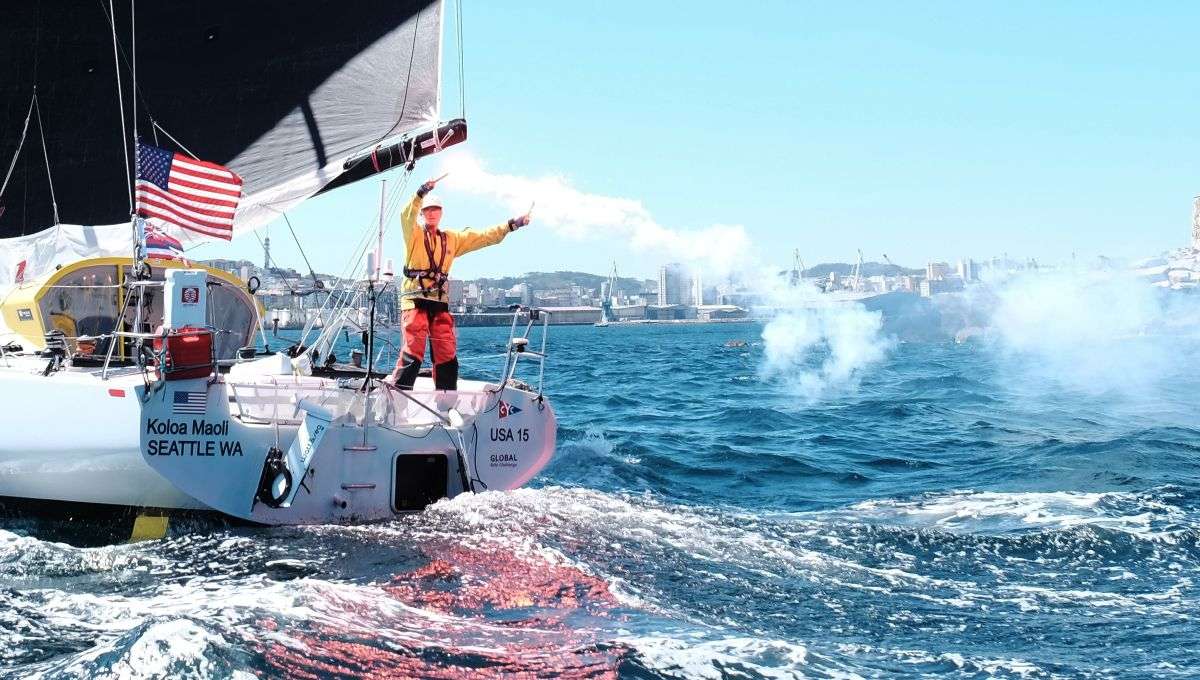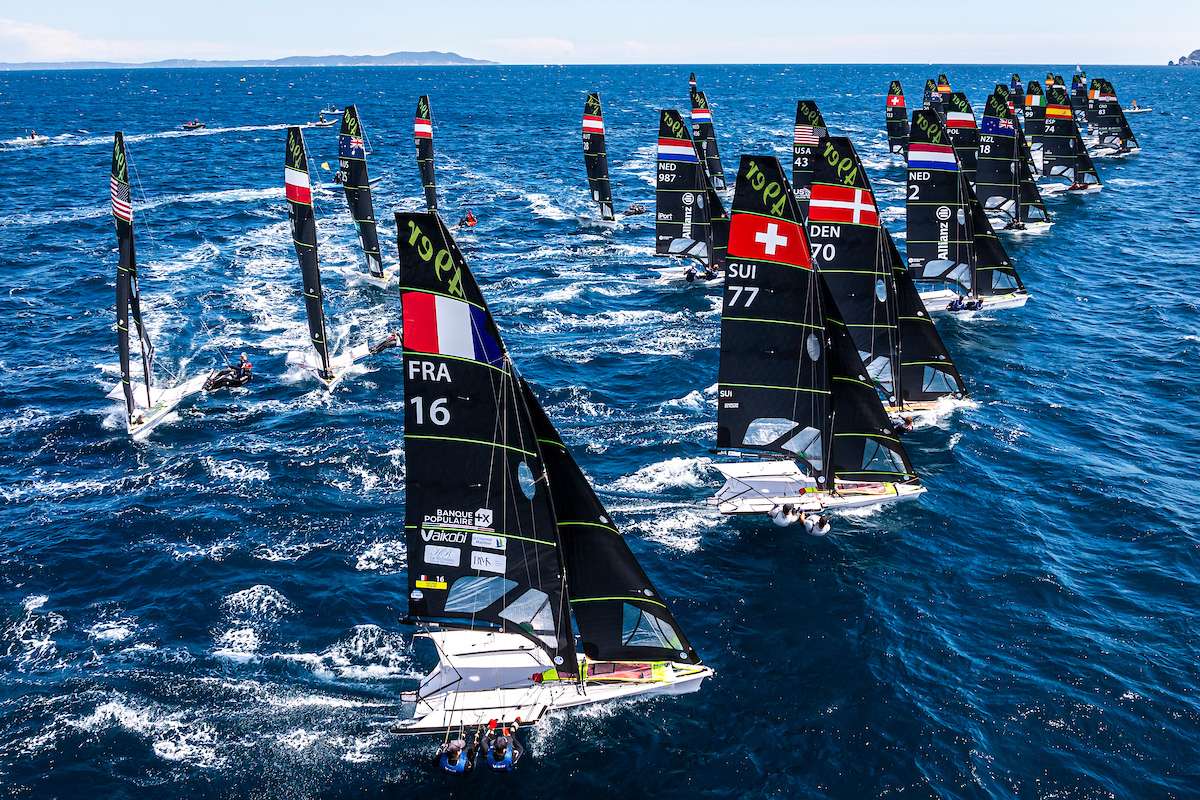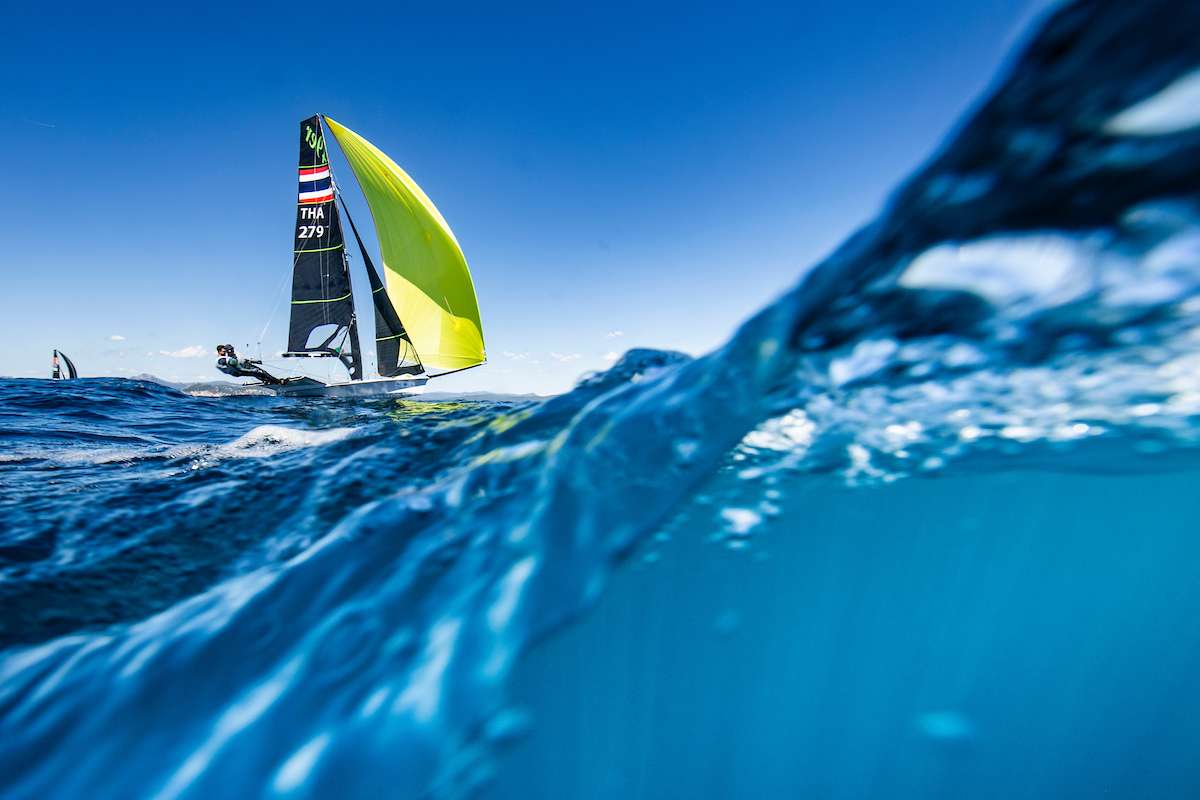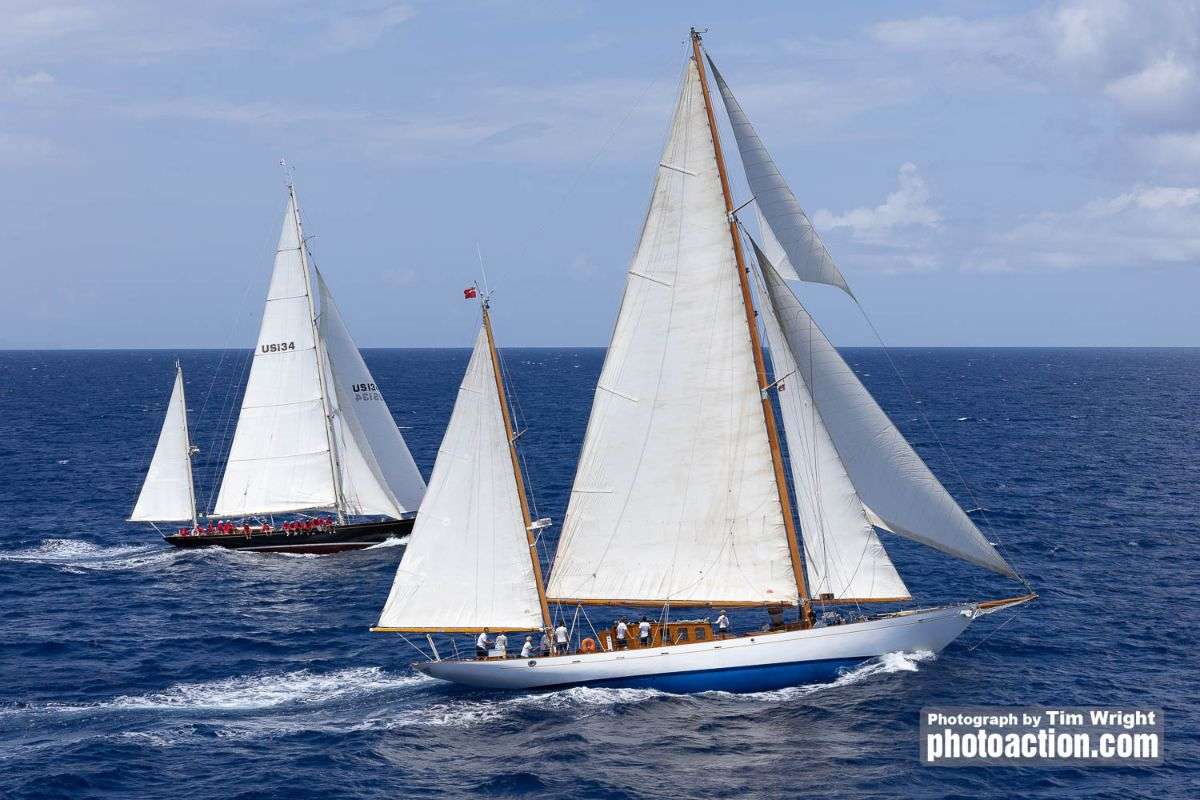Enveloped by the sound of a mournful ‘moo cow birthing’ foghorn reverberating through the dank air we sailed away from Halifax, Nova Scotia, into a rippling curtain of fog.
In Nova Scotia’s thicker, wetter, colder kind of fog the litany of shipwreck sagas are palpable along its shoal, rock and island littered coastline. No visibility, tides and currents pulling boats this way and that, no chance of a sun sight to settle dead reckoning positions; no wonder, in times gone by, hulls and souls were destined to disappear.
Certain our course was empty of other vessels and hazards, via the telltale tablet and unfogged radar, we assuredly sailed full pelt into the murkiness, past fog hidden Brig Rock, Sober Island, Tom Fool shoal, The Lump and corroborating waypoint buoys each with its signature clanking bell, shrill whistle or woeful hoot.
Locals describe the Atlantic coast of Nova Scotia as the ‘eastern shore’ because it lies due magnetic east from Halifax. The coast is as jagged and ragged as can be with helpful offshore sea buoys and danger marking inshore buoys. We were destined for superlative Cape Breton Island but instructed by an old timer not to rush beyond the ‘eastern shore’ for behind its peripheral protrusions, which are a break wall to the Atlantic, there are dozens of land-locked bays, protected beaches and tranquil anchorages in short or long day hops of each other.
The plotter reckoned it would take us four days with stops to appreciate its offerings. It could have taken four months for all I cared as we poked Passepartout’s bow into the fog and watched its curtain close upon the city.
That familiar feeling of deliverance mixed with sluggishness and gooey brain swept over me as we headed off on our high latitude cruise of Nova Scotia, Cape Breton Island, Newfoundland and the French Islands of Saint Pierre, Miquelon and Isle Madame in between.
Somewhere in the recesses of my mind, I remember reading that summer in these parts constituted three whole weeks from late July to early August. It was early June so we were ready for a cool un-summery passage.
All long time sailing friends on board, we were three escapees from a Victorian and Tasmanian winter and one Frenchman for ‘lost in translation’ amusement. We were gaining longer days but nought in warmer temperatures while we slipped into the predictableness of passing miles punctuated with cat naps, meals, standing and sitting, but always forever watching.
Our vessel of life’s present necessities was the Allures designed 40’ Passepartout, bereft of all hardship on her comfy cockpit cushions, behind her protective dodger and under her sheltered awning straddling the helm.
The luxury I savoured most was the prospect of losing track of what day it was. Stretched out in a cockpit reading, knitting, watching the world go by and building an appetite for the next meal; the feeling of going nowhere in particular and then continuing beyond to somewhere in particular.
Who were we, as first timers on this coast, to realise that choosing the offshore passage would bound us in fog. On our offshore approach to our first anchorage in Beaver Harbour, the fog instantly burnt off close to shore and suddenly, before us in dazzling sunshine, was another of those moments requiring mental modification.
I predicted the re-emergence of a populated coastline freckled with neat Halifax-like homes enjoying water views, but not a house in sight; only heavily wooded forests and erect sentinel pine trees tracing the ridgelines. A coast of forested reserves, protected by Nova Scotia’s Nature Trust, continued on-and-on with only a sprinkling of space loving rural communities found in deep inlets.
At the dead end of Liscomb Inlet lies Liscombe Lodge boasting a sauna, whirlpool and swimming pool. We had not been long enough removed from such urbane offerings to be hooked by these lures. Instead, we walked for many miles, along Liscomb River trails eyeing the splendid botanical detail of the collective rolling green landscape we had been passing from seaward.
A cruise of contrasts was clearly emerging: the historical juxtaposition of French and English battles for territorial supremacy; fog and visibility, cold and hot, wind and no wind, rain and sunshine, lobster pots and no lobster pots.
These vexing pots, tethered to outrageously long floating lines, are dropped everywhere in five metre to 20m depths with no apparent rules exempting them from channels, harbour entrances, under bridges or around narrow bends.
Passepartout’s wheel got a work out as we swerved our way through minefields of painted buoys until one elusive line, obscured by sparkling sunlight and painted thoughtless navy blue, wrapped around our propeller at the end of St. Andrew’s Passage.
Into wet suits, we took it turns to dive time and again into that breath-taking, heart-burning icy water to slice through the tangled mess. With the collapse of the cod fishery, the focus has diversified to lobster, shellfish, snow crab, scrimp and scallops to sustain significantly less livelihoods in these parts.
With a disentangled propeller, we continued on to a beautiful one-boat cove encircled by George, Grassy and Piscatiqui Islands near Canso at the far northeast end of Nova Scotia.
Time to cross Chedabucto Bay and the Bay of Rocks to Cape Breton Island and the tranquil waters of its Bras d’Or Lakes accessed through St Peter’s Canal: a back door lock blasted through solid granite. This shortcut saves sailing halfway around Cape Breton Island to enter the lakes via the northern Great Bras d’Or Channel.
Once through the lock, we were in squeezy twisting St. Peter’s Inlet that delivered us to the Bras d’Or Lake; described as “being in your mother’s arms” with its flat water, hundreds of anchorages, no fog, little tide and few navigational hazards.
This benign 425 square mile basin wrapped us in its smooth embrace and coloured our world in a ringed palette of every shade of arboreal green, blue skies and the shifting tints of rainwater blended with seawater; sprinkled with diamond lights at dawn, dazzling cobalt at noon, mercurial at dusk and obscure in the dead of night.
Before dawn the lake reflected our composure. It laid like glass from which an occasional fish would jump or bird would plunge. In the last of the slowly fading high latitude twilight, we would sit in the cool night air as the cabin lights invited such an assortment of flying summertime bugs, the concentration eventually driving us below decks.
Easy days passed amongst the marble islands within a sea inside an island as books were lowered, heads were raised and pauses transpired between knitting stitches and Kukuro puzzles: an eagle in the distance, a lighthouse passing by, a bridge up ahead, a stately white weatherboard home sedentarily perched in an expanse of flawlessly manicured pasture.
High latitudes are not crowded cruising places. Remarkably, Passepartout was a lone boat in every anchorage. The villages ashore were small, quickly circled and effortlessly enjoyed. Even more pleasurable were our greetings with weather-resigned locals quietly rejoicing their emergence from another bitterest of winters.
Much more complex was the history of Nova Scotia in the 18th century. It was a strategic trophy seesawing between French and English occupation resulting in a complicated history. The excellent historical, cultural, fauna and flora interpretation signs answered all our incidental wonderings of how, when, where and all the whys in between.
Although the English won out in the end, the remains of French occupation are still disclosed in place names, food and the way locals effortlessly switch between the two languages mixed with quirky accents: Irish, Scottish, west country, Arcadian and old French.
Every museum in our path was worth a visit, especially one celebrating the life of Alexander Graham Bell the inventor of the telephone in Baddeck, a picturesque village and the largest settlement on the Bras D’Or Lakes.
After a week, we exited the lakes via the Great Bras d’Or Channel and a three knot current into the Atlantic Ocean and onto White Point on the north east tip of Cape Breton Island where fishing boats outnumber homes and a young bare-footed bride and her groom exchanged vows on a wild headland teaming with puffins, gannets, razorbill auks, bald eagles and seals.
Ready to ride the prevailing south-westerly across the Laurentian Channel, we set sail at dawn to make a landfall on Newfoundland’s south coast before nightfall. This frayed stretch of coastline, running west to east, is indented with rugged cliffs and north to south bays and inlets. Place names like Funnel Head, Blow Me Down and Mistaken Point are giveaways to the onshore weather effects of blocking, channelling and funnelling winds battering its shores.
Isle aux Morts: Island of the Dead pronounced Eye-Lo-Mor, awaited us on the other side of the channel. Named in remembrance of all those who lost their lives in shipwrecks.
As bleak as the name is, the infinite warmth and welcome we received from Newfoundlanders in full swing celebrating Canada Day, transcended any hint of morbidity. They were full of fishing stories on a once hugely-productive ocean. Smouldering below the surface were also tales of angst and exploitation of resources, weather deprivation and the greed of prosperous merchants holding the hungry minority to a life of indenture.
Despite the complex weave of historical and economic circumstance, the Newfies’ are a generous good-hearted people stoically eking out a living amid long winters, fogs, storms, heavy precipitation, cold temperatures and a rock-strewn coast sharpened by a pounding ice-cold ocean. Theirs is a tale of adaptation to the trials of climate, weather and geography.
The heroic story celebrated on the coastal Harvey trail best embodies the spirit of humanity to be found on these shores. The trail is dedicated to a father and his 17-year-old daughter, Ann Harvey, who, along with their Newfoundland dog, Hairyman, rescued 200 souls from two shipwrecks without a thought for their own mortality.
Many of Newfoundland’s splendid south coast fjord towns, locally known as outports, are unconnected by roads and there is hardly a child or teenager amongst the aging populations. After the first snow, most settlements are isolated from civilisation until the spring thaw.
When the cod fishery collapsed in the 1990s, the outports started to die so the Canadian government offered resettlement grants of $270,000 per household to end the ongoing costs of keeping the outports serviced. It takes, however, a 90 per cent community vote to abandon a town and agree to resettlement.
The outport of Pushthrough for example, named after a whale that got stuck in the fjord’s channel and was pushed through to the open sea, lost the vote and the village occupants are long gone. The lighthouse keeper stayed on as the last lone resident.
Outports that linger today are marginal but they offered us the opportunity to stroll amongst lives lived in remoteness and to savour the quaintness of a simple existence in an overly-connected world. All the abandoned outport government wharves offer a protected empty dock space for the occasional cruising boat that ventures this way.
In Francois: Newfie’s pronounce it ‘Franz-way’, there are only 65 residents, five children and one teacher. The homes, sign posted with five re-occurring surnames, sit precariously on steep rock ledges and are interconnected by suspended boardwalks, footpaths and makeshift bridges traversing gushing waterfalls deluging down lofty hillsides. Disappointed to have missed the opening hours of the museum, the good-humored shopkeeper casually handed us the key to let ourselves in!
I just about wore out my walking boots in these fjords. The diversity and bush tucker in the landscape was colossal with everything pruned to within an inch of its life by gradient, anabatic, katabatic and every which-way wind.
And so, with the prevailing southwest wind we sailed southeast to Saint Pierre and Miquelon Islands that are, unashamedly, France: as in poodles, patisseries and pinot noir!
Down came the Canadian courtesy flag and up went the French tricolore. As our dock lines hit the shore on stomped the contraband-checking ‘douanes’, followed by the passport stamping ‘police des frontières’.
Through the streets of radiantly painted co-joined houses we found baguettes, croissants, galettes and ‘fonctionnaires’ (public servants). French was spoken everywhere, English barely stomached. This is France and you will be French here unlike Canada and Québec where you can be French and Canadian simultaneously.
The restaurants, boulangeries, food and wine are, but of course, connoisseur quality!
After our fill of frog legs and snails, on we sailed to Miquelon, which has no natural harbour but offers a solid government wharf behind a substantial break wall.
Miquelon is as French as Saint Pierre but with 600 ‘country folk’ compared to the latter’s 6,000 ‘city folk’. On Miquelon, there is space between homes separated by fields of vegies grown in perfect symmetric rows in preparedness for winter stockpiling and the most beautiful panoramic hilltop and cliff edge coastal hikes.
All the south westerlies that carried us ever so gently north now needed to be renegotiated as pummelling headwinds as we turned south. There are always times of Opus Dei when headwinds eventually become inescapable.
Although Passepartout is happiest just off the wind and decent downwind, she is no slouch to windward either. With a staysail and two reefs in the main she is well-balanced in 25 knots and chews up the miles at 6.5 knots; “not bad for a monohull,” as Doug likes to surmise.
That is our history together, Doug and I, raced with and against one another in trimarans, so imagine the repetitious lamentations about sailing at wind speed or better, creating apparent wind and surfing at 30+ knots.
Enough of that and back to more ‘age-appropriate’ sailing. From Miquelon, we started bucking through a cranky-confused, cross-sea that simply required us to ‘suck it up’ while too often observing our creeping faltering progress off our rhumb line to Sydney, Nova Scotia.
We had settled on three-hour solo watches through the night with the next watch person on stand-by. Alone in the cockpit, I looked down on my friends, all sleeping soundly, or so I thought.
The bow, dropping and crashing off waves, had driven Doug from his forward bunk onto the portside cabin couch; on the starboard couch, Jan was suffering her worst-ever bout of sea sickness and was coiled as tight as a bamboo mainspring under her favourite quilt and; Jean Louis, next on watch in full wet weather gear, sleeping Asian monk-like on the cabin sole, companionway step as his hard pillow. Such a reassuring scene of three safely curled silhouettes suffused in a shaft of moonlight streaming through the deck hatches.
How could I wake Jean Louis for his watch? All was well with the trim and helm and I was listening to an enthralling podcast, albeit with noise cancelling headphones, while watching the progress of an occasional ship passing ahead or astern of us along with a mindful-eye on a slight wind change allowing Passepartout to track closer to her intended rhumb line.
“Good night’s sleep, Doug?” I enquired optimistically at dawn.
“That sleeping pouch is way too thin and I was freezing; every time the boat slammed into a wave a pulse of cold air, chilled by the aluminium hull, found its way out through the cupboard finger hole and puffed squarely into my face; this coincided perfectly with a drip landing on my forehead from the deck hatch; I needed my beanie but it was three steps away through the floor puddle; then came my ruminating debate of warm head versus wet socks punctuated by the retching sound of the salt water sink tap and Jean Louis’ relentless sawing snore!” he retorted.
So much for perfecting the art of Zen-ing oneself to sleep!
With that eventual wind shift came our decision to backtrack through the ridiculously pleasant Bras d’Or Lakes and our envisioned Sydney landfall unregrettably fell off our horizon. That’s the magnificence of cruising: not having a pig-headed plan and sticking to it.
Retracing our passage back to Halifax, ducking and diving the worst headwinds, we had a second-bite of Nova Scotia’s eastern shore in late July when the weather was more akin to our romantic notions of what constitutes a summer.
Never seeing another yacht, we were left to imagine the native Mi’kmaq in the unencumbered vastness paddling birch bark canoes and hunting the shores of a plentiful sea. The only remaining sign are in middens and harmless place names: Musquodoboit, Mushaboom, Necum Teuch, Ecum Secum, Chebucto.
As I climbed through Passepartout’s companionway, thinking of taking a quick swim alongside two tiny porpoises sharing the bay, the vibrant, sun-soaked day had congealed into a silver tone orb of thick sea fog. That warm pleasant breeze fanning a cold sea had suddenly condensed and spirited us into an eerie crypt.
As an old Nova Scotia sailor once described, “when the fog comes in thick you can sit on your boat’s rail and lean against it. Be careful, ‘cause when it lifts you’ll fall overboard”.
In typical contrast, the next day was magnifique. Again, we were four friends in sunshine yakking Franglais and laughing in a faraway place.
Home can be anywhere you are at peace with the world: a state of being on a boat at sea. ≈
























